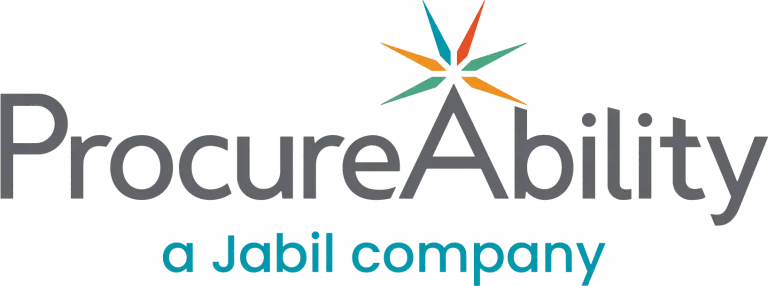Part Two
Mastering Managed
Procurement Services
The Five Rules of Engagement

To improve the understanding of how Managed Services can help support business growth, ProcureAbility is presenting “Mastering Managed Procurement Services.” In this Insights series, we provide a comprehensive introduction to procurement Managed Services, exploring how this model supports procurement success and long-term growth.
In the first installment of this series, we explored how a Managed Services provider can help transform procurement operations. This second and final part provides a five-step, actionable roadmap to help you identify where to begin and how to build an effective relationship with a Managed Services provider.
Maximizing your partnership with a procurement Managed Services provider requires a strategic approach to defining their role within your organization. You should start by developing clear objectives and an understanding of how your organization could utilize and benefit from such a partnership, what qualities and capabilities your provider should have, what types of engagements might be best to start with, and how your relationship may evolve over time. The following five steps provide a roadmap to an optimal Managed Services provider partnership.
1. Develop your organizational requirements
Effective service providers function as strategic partners to a company’s procurement team. They integrate seamlessly by understanding needs, goals, and strategies, aligning their service offerings with broader business objectives. This ensures the procurement function supports enterprise-wide goals.
A strong partnership depends on teamwork, clear communication, transparency, continuous improvement, and shared values. When executed effectively, Managed Services partners add measurable value by improving processes such as purchasing standards and introducing innovative concepts.
Questions to consider at this formative stage include:
- How well is your procurement organization meeting its objectives and goals?
- In what ways is procurement partnering with business teams to help achieve their objectives?
- Where are the gaps, constraints, or inefficiencies within your processes and operating model that may be limiting effectiveness?
- To what extent is your procurement team taking a strategic approach in its engagement with business stakeholders?
- Does your team have the appropriate resources, technology enablers, business engagement model, knowledge, and time to play a strategic role?
- Which areas would most benefit from Managed Services support to enhance your team’s effectiveness?
- What specific outcomes or improvements are you and your business stakeholders looking for from this partnership?
- What information—about your organization, objectives, scope, work volumes, and challenges—should be shared with Managed Services providers to enable them to propose a well-informed solution?
2. Conduct due diligence of potential partners
The foundation of a successful partnership lies in choosing a Managed Services provider that aligns with your organization’s objectives and culture. Before onboarding, conduct an in-depth evaluation of each provider’s services and capabilities. The right partner can elevate procurement performance and ROI, while a poor fit may lead to missed goals, communication challenges, or compliance issues.
When assessing potential providers, prioritize the following criteria:
- Functional expertise: Evaluate their domain knowledge and hands-on experience in procurement services. If you’re seeking source-to-contract execution support, assess their proficiency in RFPs/RFQs, negotiations, and methodologies used across similar client programs.
- Talent: Ensure the provider employs experienced professionals with both executional and strategic skills. Learn how they manage talent development, as this affects service quality and consistency.
- Industry alignment: Seek a provider with a proven track record in your industry to ensure familiarity with market nuances and tailored solutions.
- Scalability and flexibility: Select a provider that can scale services to meet evolving business needs.
- Technology: Confirm their ability to leverage innovative tools and operate within (or adapt to) your existing technology stack.
- Processes: Be sure to partner with a provider with a case history of improving organizations by adjusting their procurement processes. This experience will enable them to deploy improvements to optimize your procurement process.
- Service footprint: A Managed Services provider with a broad service footprint can provide nuanced support that aligns with your geographical and market-specific requirements, ensuring that your procurement strategies are both globally informed and locally applicable.
- Market intelligence: The ability to tap into up-to-date, relevant market data and trends can give your procurement strategies a competitive edge. Evaluate how a Managed Services provider gathers, analyzes, and utilizes market intelligence to inform procurement decisions and strategies.
3. Choose the area of engagement
The ideal engagement area depends on your organization’s procurement maturity. More mature teams might focus on enhancing value through global sourcing or analytics, while less mature organizations often benefit from building foundational procurement processes and operational support.
As you consider the right areas to engage, think about initiating support in these impactful areas: Source-to-contract (S2C) execution, operational procurement (PR to PO) activities, spend analytics and value reporting, category management support. When determining where to begin, consider impactful areas such as:
- Source-to-contract (S2C) execution: Your provider can improve the S2C process execution by speeding up the selection, evaluation, award, and engagement process while staying compliant with policy and contractual requirements.
- Operational procurement (PR to PO): Streamline requisition-to-order processes, improving service levels and stakeholder satisfaction.
- Spend analytics and value reporting: Leverage data to identify spending patterns, prioritize efforts, and highlight procurement’s measurable business impact.
- Category management support: Enhance category planning through supply market research, supplier analysis, and project support.
4. Consider leveraging strategic project support
Beyond core services, your provider can often add value by supporting large-scale, strategic initiatives. Their expertise can accelerate delivery and amplify impact in areas such as:
- Strategic sourcing initiatives: Your provider can often play a more strategic role by supporting the development and execution of strategic sourcing plans and category strategies that align with the company’s long-term goals.
- Supplier relationship management: Bringing their specialized industry expertise, your provider can enhance relationships with your organization’s key suppliers to foster collaboration, innovation, and value creation.
- Navigating organizational changes: Managed Services providers are often experts in smooth transitions and change management. From M&A to reorganizations, or shifting procurement processes, your procurement partner can guide your procurement team through strategic procurement initiatives while ensuring stakeholder buy-in and seamless transitions.
5. Plan for cultural integration, communication, and change management
Cultural alignment is key to integrating managed procurement services successfully. Without that awareness, an effective collaboration can prove elusive. But you’ll need to do your part in bringing your provider up to speed in this respect, which you can do through the following steps:
- Communicate your organization’s values: This knowledge and cultural context will enable the provider to develop procurement strategies that align with the company’s goals. For example, if ESG is a priority for your organization, your provider can work to identify eco-friendly suppliers.
- Explain the ways you work best: Provide your provider with information about the company’s communication style, decision-making process, organizational culture, to facilitate effective collaboration.
- Engage key stakeholders early: Coordinate with functions like Legal, Finance, and IT to define rules of engagement and standard touchpoints.
- Maintain open, two-way communication: Establish regular alignment sessions and transparent feedback channels to ensure both teams evolve together.
Looking ahead
Effectively leveraging a Managed Services partner accelerates onboarding and maximizes ROI. Gathering key information, deploying resources efficiently, and equipping teams with the right tools are crucial to maximizing procurement partnerships and driving value, efficiency, and innovation.
Authors:

Contributors:
Kathleen M. Pomento, Chief Marketing Officer, ProcureAbility
References:
- Best Practices for Identifying Procurement Needs
- A Complete Guide to Your Procurement Department-ProcureDesk
- What Does Source-to-Contract Mean?
- What is Source-to-Contract? Benefits For Your Business
- 7 questions to assess indirect procurement maturity
- https://www.linkedin.com/pulse/how-organisation-culture-impacts-procurement-steve-horton/
- Tips for Choosing the Right Procurement Service Provider
- 13 Tips on How to Choose a Managed Service Provider – PSM Partners
- Choose the Right & Best-of-Breed Procurement Services Provider
- How to Select a Procurement Services Provider? – The Strategic Sourceror




